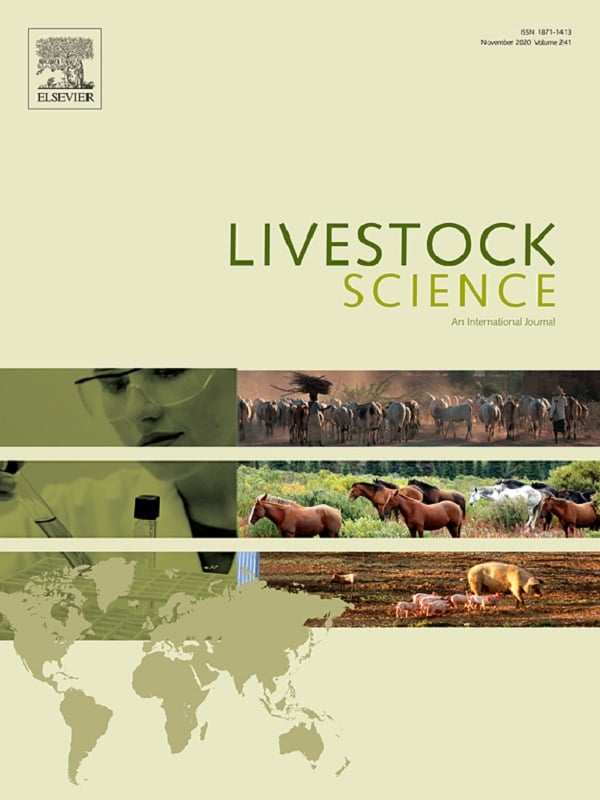Effect of feed restriction on performance, carcass yield and nitrogen and energy balance in growing rabbits
2020 Livestock Science 241:104278
- Across species

Abstract
The aim of this work was to study the effect of different feeding restriction strategies in growing rabbits. A total of 600 rabbits were weaned at 34 d, caged in groups (5 animals/cage; 24 cages/treatment) and randomly assigned to the 5 treatments. Control group (AL) ad libitum intake and the others four were restricted 80 and 70% of theoretical ad libitum intake (R80 and R70, respectively), during the whole fattening period or until 48 d (R80AL and R70AL, respectively). Only one diet was formulated (CP: 159 g/kg DM; NDF: 324 g/kg DM; DE: 2689 kcal/kg DM). At the end of the fattening period, 24 rabbits per treatment were slaughtered and the weight of carcasses and digestive organs were measured. A digestibility trial was done in individual metabolic cages between 53 and 57 d (12 rabbits/treatment). Feed restriction impaired (P < 0.001) the feed conversion ratio (1.93 vs. 1.82 g/g, on average) and daily weight gain (42.4 vs. 60.3 g, on average) from 34 to 48 d. However, from d 48 to 61 there was a compensatory growth in rabbits fed ad libitum (R80AL and R70AL) once they finished the restriction period (61.1 vs. 46.4 g/d, on average). On the whole fattening period, the compensatory growth led to a better feed conversion ratio (2.25 vs. 2.33 g/g; P < 0.001), and rabbits fed R80AL finished the fattening period with a similar final body weight than those fed the control diet. Internal organs increased (P < 0.05) their size, when rabbits were fed ad libitum after the restriction period, especially in those restricted at 70% in the first phase. Average mortality was 12.8% and it was not affected by treatments. Digestibility of protein in treatments R80 and R70 tended to be higher than those restricted until 48 d. The digestibility of the other constituents was not affected by any of the restriction strategies. The nitrogen and ashes concentration in carcass increased, whereas fat and energy content decreased in whole fattening period in restricted groups (P < 0.001). Efficacy of nitrogen retention tended to increase (P = 0.074) and the nitrogen and energy excretion through the faeces, and urine+heat losses decreased (P < 0.001) in restricted animals. In conclusion, restriction until 48 d could be a useful tool to reduce the environmental impact of the farms without impairment of growth performance.